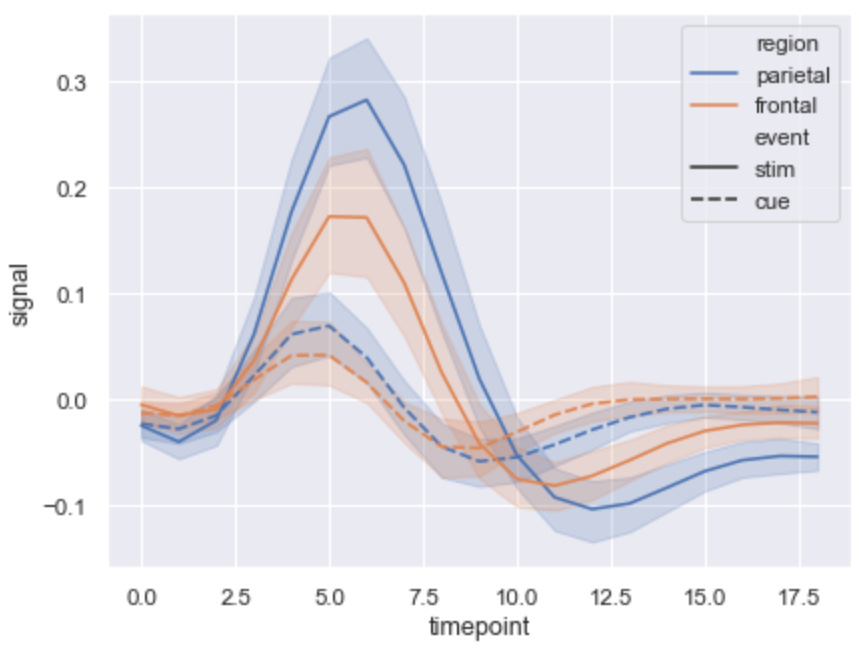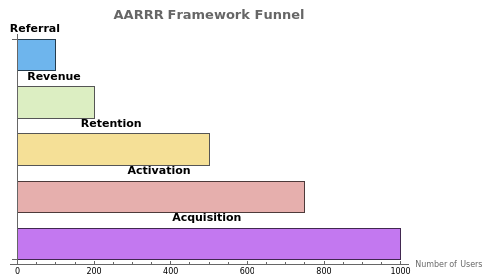7 Essential Skills for Landing Your First Data Science Job in 2024
And how to actually get good at them
The Landscape
Landing an entry-level Data Science job in 2024 is like threading a needle.
Out of 4,462 US full-time Data Science positions posted on LinkedIn last month, only 581 (13%) were marked “Entry Level.”
Peeling the layers from these “Entry Level” listings, I sampled 10 randomly and discovered that 6 required 2 years of experience.
𝐖𝐡𝐢𝐜𝐡 𝐦𝐚𝐤𝐞𝐬 𝐯𝐚𝐜𝐚𝐧𝐜𝐢𝐞𝐬 𝐟𝐨𝐫 𝐧𝐞𝐰 𝐠𝐫𝐚𝐝𝐬 𝐚 𝐦𝐞𝐫𝐞 𝟓.𝟐%.
This is infuriating!
Competition is fierce, but you have the strength to outshine.
This guide will help you focus, learn, and dominate the field.
Before we dive into each skill, I want to show you something really cool.
datanerd.tech reveals top skills in every data profession by analyzing job postings.
For example, here are the top 5 skills for Data Scientist roles in the US:

This site also showcases trending skills, salary insights by role, and more:

Cool right? Have a play!
PS: Want to land a top data jobs in just a few months, while adding $20-50K to your salary?
Join this list to get the details and be the first to know when spots open!
Skill 1: SQL
It’s 2024. SQL is still the no-BS skill for anyone serious about a data career.
Forget the naysayers; SQL is your bridge to understanding and manipulating data.
As long as relational databases exist, SQL will dominate!
Example question
How many times did people aged 20-30 in Berlin open Tinder yesterday?
Key concepts
Grouping and aggregate functions.
Joins (left, inner, outer, etc.)
Append data sources (union).
Filter data by complex conditions; differentiate between where and having
Window functions (lag and lead)
De-duplicate, sort, handle missing data
How to learn
sqlzoo: Hands-on practice questions
sqlcourse: Breaks down concepts with examples and exercise
w3schools: Covers more topics but with easier challenges
Mode: Visual code illustrations with examples and practice problems
Practice consistently. Dive in daily at least two weeks before your interview.
Your conquest in the data world starts with SQL.
Skill 2: Python or R
Mastering another language will elevate your data science game.
Python and R both complement SQL effectively. While companies value both, if you’re starting fresh, choose Python. Its extensive library of packages, suitability for software programming, and deep learning make it indispensable. Fortunately, once you master one, picking up the other becomes very manageable.
For example, Meta’s GeoLift package originated in R. As a Python user, I adapted the R code for my project in just a couple of hours.
Example question
How many Uber rides occurred in Los Angeles last week? What’s the average revenue per ride?
Key concepts (Python)
Libraries
Data manipulation and analysis: Pandas, Numpy.
Spend 80% of your Python time here.
Master SQL concepts within Python, like groupby and join.
You will carve this code into your bones 😅:
import pandas as pdVisualization: Matplotlib, Seaborn
Machine Learning: scikit-learn
Statistics: statsmodels
Variable types
list, tuple, dictionary, set, int, float, boolean, etc.
Features
Conditional statements: if, elif, else
Loops
Functions: def
List manipulations: append, remove
How to learn
10 minutes to pandas: Pandas official user guide
codecademy Learn Python 3: Covers key features with quizzes and projects
data analysis with python: Covers key libraries for data analysis
learnpython.org: Practice questions
Skill 3: Product sense
Developing product sense means evaluating products like a pro. It’s crucial for aspiring data scientists, especially for B2C giants like Facebook and Spotify.
So, how do you cultivate product sense?
Think like a Product Manager.
Why do you love certain apps but not others? What makes your favorite product so addictive? How do you judge a product’s success or failure?
Start by asking these questions. Then, blend intuition with technical skills and top it off with analytics.
Example question
How would you evaluate the health of Facebook Groups?
Key concepts
Aligning Goals
Understand how company goals align with product goals. For example, Meta’s mission—“Giving people the power to build community and bring the world closer together”—guides Instagram Stories, which encourage frequent content creation and app visits
Growth funnel: AARRR
Imagine my Substack:
Acquisition: You found this article on LinkedIn
Activation: You loved it and subscribed
Retention: You keep reading my articles
Revenue: You become a paid subscriber or hire me for coaching or consulting
Referral: You share it with friends
Funnel analysis
Where do users drop off? What friction points cause churn? For example, a lengthy sign-up process might deter users. What strategies bring users back? Perhaps Thursday evening email notifications double the click rate compared to Monday mornings.
Evaluation metrics
North star: The primary indicator of product health. For Facebook, it’s Monthly Active Users (MAU).
Secondary: Complementary indicators like user retention rates and new user growth.
Guardrails: Business metrics to monitor for negative impacts, like the percentage of fake accounts on Facebook.
Troubleshooting
Suppose Airbnb searches drop 35% today. How would you diagnose the issue?
How to learn
Cracking the PM interview: Learn to approach problems like a PM.
Exponent PM mock interviews: Watch PMs from top tech companies solve product problems in real-time—an invaluable learning resource.
Sequoia’ Product blog: Stay updated with insights from industry leaders.
Skill 4: A/B testing
A/B tests, or controlled experiments, drive crucial product launch decisions. By comparing different versions of a web page, product design, or layout, you can measure performance against a chosen metric.

Example question
Your PM wants to launch YouTube Shorts. How do you evaluate this feature’s success?
Key concepts
Understanding causation vs correlation
Evaluation metrics
Statistical concepts for AB testing
T test, P value, Z score, Significance level, Confidence interval, Minimum detectable effect, Samples size estimation
Recognizing effects
Network effect (e.g. Bumble, Uber)
Novelty effect when users are more reactive when a feature is newly launched
[Bonus] When A/B testing is not suitable
Small user base
Brand-new app status
Resource constraints
Steps for running an A/B test
Clarify the objective: Capture user views with YouTube Shorts
Set metrics
Goal metric: YouTube daily active users
Secondary metrics: Shorts only users %, overall time spent on the platform
Guardrail: Time spent on regular videos (where ad revenue comes from)
Form hypothesis: YouTube Shorts will increase YouTube daily active users
Create experiment groups
Control: Users don’t see YouTube Shorts (status quo)
Experiment: Users can see and interact with Shorts
Calculate sample size
Choose significance level (alpha)
Determine minimum detectable effect
Consider potential complications
Should all creators get the Shorts function, or only a select group?
Perform a randomized user test or a location-based test to minimize network effect?
Decide experiment length:
Should cover at least a week to account for daily patterns
Might need to run longer with a small user pool
Perform significance test on goal metric & evaluate other metrics
Make launch decision
How to learn
Udacity’s A/B Testing course by Google is my holy grail. It covers everything mentioned here. Watch it twice: get the gist the first time, and dive deep the second. If you are in a rush, read a course summary, but I highly recommend watching it in full and doing all the exercises.
Skill 5: Statistics
Example question
Can you sketch the distribution of Tinder matches on a given day?
Key concepts
Common distributions: Understand binomial and normal distributions.
Central limit theorem: Grasp how sample means form a normal distribution, regardless of the population distribution.
Regression to the mean: Recognize that extreme values tend to move towards the average.
Probability and Bayesian probability: Differentiate between classical and Bayesian approaches to probability.
Variance, standard deviation: Measure the spread of data.
Mean , median, percentiles: Calculate central tendencies and data positioning
How to learn
Probability & statistics from brilliant.org: It offers clear illustrations and practical problems to cement your understanding.
Skill 6: Machine Learning
Example question
How would you design a newsfeed ranking algorithm?
Key concepts
Types of ML models:
Regression: linear regression
Classification: logistic regression, trees
Clustering
Supervised vs. unsupervised learning
Evaluations metrics: accuracy, precision, recall, F score, AUC
Cross validation
Bias-variance tradeoff: Balance the complexity of your model to avoid overfitting or underfitting.
How to learn
Machine Learning with Python: This introductory course covers common models and their applications.
geeksforgeeks: Covers a wider range of topics and advanced concepts. For example: Basic ML model evaluation
ML cheatsheet: Quickly reference each model and key statistical concepts.
An Introduction to Statistical Learning: Textbook Columbia Universty uses for its Stats masters program. If you have more than 6 months to look for jobs, or aspire for a career towards Machine Learning, I highly recommend this book because I love how systematic and technical it gets.
Skill 7: Interviewing and communication
Nailing the interview and mastering communication is half the battle in landing a job.
To give this important skill the attention it deserves, I’ll dive deeper into it in a separate blog. keep an eye out for the next post!
[EDIT] Check out these 2 critical mindsets that helped me land 5 jobs in 2 months.
[Bonus]: What NOT to focus on
Specific visualization tools like Power BI or Tableau
Don’t stress over mastering tools like Power BI or Tableau unless your dream job explicitly demands them. Tech companies often prefer Looker or Databricks for dashboarding, which you can quickly learn on the job. Tableau and Power BI tend to be more relevant for data analysts.
Building Deep Learning models
Avoid going into the deep end of building complex models. It’s tempting to get lost in creating cutting-edge technology, but entry-level data science roles require broad ML knowledge, not deep expertise. Jobs demanding extensive deep learning skills usually have titles like “Machine Learning Engineer” or “Applied Scientist.”
The most important thing…
Practice relentlessly.
Before my interviews, I drilled every day for a month.
Set up mock interviews. Get friends to play the interviewer. I went through nine mock interviews—six on product and three on coding—before the real deal.
Thinking you can silently rehearse in your head? Think again.
Speak out loud. Let your mock interviewers grill you before the real ones do.
Pester your friends for their time. Get a coach. I don’t care. No shortcuts exist when your dream job and $100K salary are at stake.
You are a legend for reading this far. Good luck!
PS: Want to land a top data jobs in just a few months, while adding $20-50K to your salary?
Join this list to get the details and be the first to know when spots open!







The best part I liked in the article was Bonus part' what not to focus'. Ofcourse yes: very few people talk about this part.
Thanks for sharing 😊